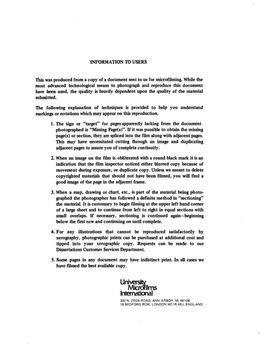| dc.contributor.author | Brul√♭michael R. | en_US |
| dc.date.accessioned | 2013-08-16T12:28:21Z | |
| dc.date.available | 2013-08-16T12:28:21Z | |
| dc.date.issued | 1981 | en_US |
| dc.identifier.uri | https://hdl.handle.net/11244/4867 | |
| dc.description.abstract | Thermophysical-property data for over fifty organic compounds, including high-boiling-temperature hydrocarbons typical of coal-derived fluids, have been used to establish the feasibility of the technique. The overall average absolute relative deviations for the over 5000 data points analyzed are less than 2% for thermodynamic properties, and 5% for viscosity. The technique is successfully applied to complex undefined fluids from the Exxon Donor Solvent process. Volatility, density, and viscosity prediction deviations are 10% of less in most cases--sufficient for carrying out constructive process design. | en_US |
| dc.description.abstract | The objective of this work was to develop a method for obtaining correlation characterization parameters for high-molecular-weight compounds when these parameters have not been or cannot be measured. The new approach for determining correlation parameters altogether circumvents the need for critical-property data per se. The required correlation characterization parameters can be extracted using multiproperty regression analysis of the various types of inspection data. Multiproperty analysis is carried out, by simultaneous calculation of these properties, using several thermodynamic-property relations (e.g., density, vapor pressure, enthalpy derived from an equation of state) and a viscosity correlation. | en_US |
| dc.description.abstract | A method has been developed for predicting compound characterization parameters used in multiparameter corresponding-states correlations. The technique employs multiproperty analysis of thermodynamic and transport data. Most of the property data utilized is similar to the inspection data obtained from industrial laboratory analyses for pseudocomponent fractions making up complex hydrocarbon mixtures. These property data include vapor pressure, density, and viscosity--the analogues for fraction inspection data such as average boiling temperature, API gravity, and Saybolt viscosity. | en_US |
| dc.description.abstract | Accurate prediction of these properties has been successfully achieved by modifying the multiparameter corresponding-states correlations so that they utilize the same characterization parameters. Comprehensive applicability of the correlations has been achieved by determining universal correlation constants based on an extensive collection of low- and high-molecular-weight petroleum and coal organic compounds. These provisions have resulted in a unified framework of self-consistent correlations from which correlation characterization parameters can be determined in a self-consistent manner for predicting the thermophysical properties of complex, undefined fossil fluids. | en_US |
| dc.format.extent | x, 208 leaves : | en_US |
| dc.subject | Engineering, Chemical. | en_US |
| dc.title | Applications of multiproperty analysis in the prediction of complex-system thermophysical behavior. | en_US |
| dc.type | Thesis | en_US |
| dc.thesis.degree | Ph.D. | en_US |
| dc.thesis.degreeDiscipline | School of Chemical, Biological and Materials Engineering | en_US |
| dc.note | Source: Dissertation Abstracts International, Volume: 42-02, Section: B, page: 0695. | en_US |
| ou.identifier | (UMI)AAI8116758 | en_US |
| ou.group | College of Engineering::School of Chemical, Biological and Materials Engineering | |
